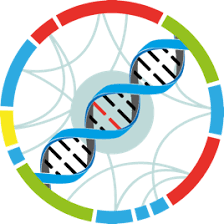Study : Transcriptional profiling of Eucalyptus grandis challenged with Chrysoporthe austroafricana
Identification
Name
Transcriptional profiling of Eucalyptus grandis challenged with Chrysoporthe austroafricana
Identifier
dXJuOkVWQS9zdHVkeS9QUkpOQTI4MDIzNg==
Description
Background: Eucalyptus species and interspecific hybrids exhibit valuable growth and wood properties that make them a highly desirable commodity. However, these trees are challenged by a wide array of biotic stresses during their lifetimes. The Eucalyptus grandis reference genome sequence provides a resource to study pest and pathogen defence mechanisms in long-lived woody plants. E. grandis trees are generally susceptible to Chrysoporthe austroafricana, a causal agent of stem cankers on eucalypts. The aim of this study was to characterize the defence response of E. grandis against C. austroafricana. Results: Hormone profiling of susceptible and moderately resistant clonal E. grandis genotypes indicated a reduction in salicylic acid and gibberellic acid levels at 3 days post inoculation. We hypothesized that these signaling pathways may facilitate resistance. To further investigate other defence mechanisms at this time point, transcriptome profiling was performed. This revealed that cell wall modifications and response to oxidative stress form part of the defence responses common to both genotypes, whilst changes in the hormone signaling pathways may contribute to resistance. Additionally the expression of selected candidate defence response genes was induced earlier in moderately resistant trees than in susceptible trees, supporting the hypothesis that a delayed defence response may occur in the susceptible interaction. Conclusion: The ability of a host to fine-tune its defence responses is crucial and the responses identified in this study extends our understanding of plant defence, gained from model systems, to woody perennials. Overall design: E. grandis trees were stem inoculated with C. austroafricana. RNA was extracted from stem material harvested 3 days post inoculation for transcriptome profiling. Three biological replicates of harvested material was sent for RNA-sequencing
Genotype
| Accession number | Name | Taxon |
|---|
